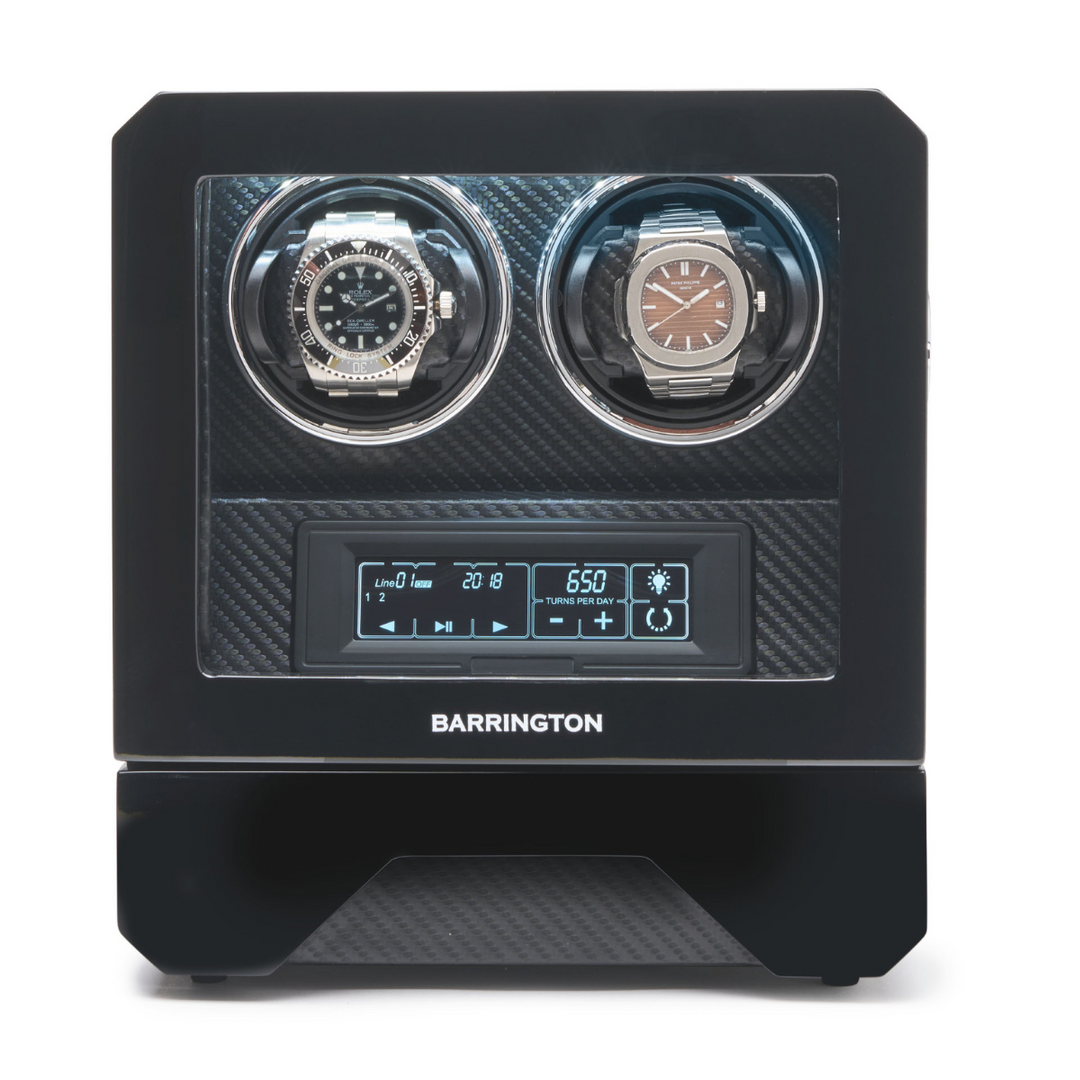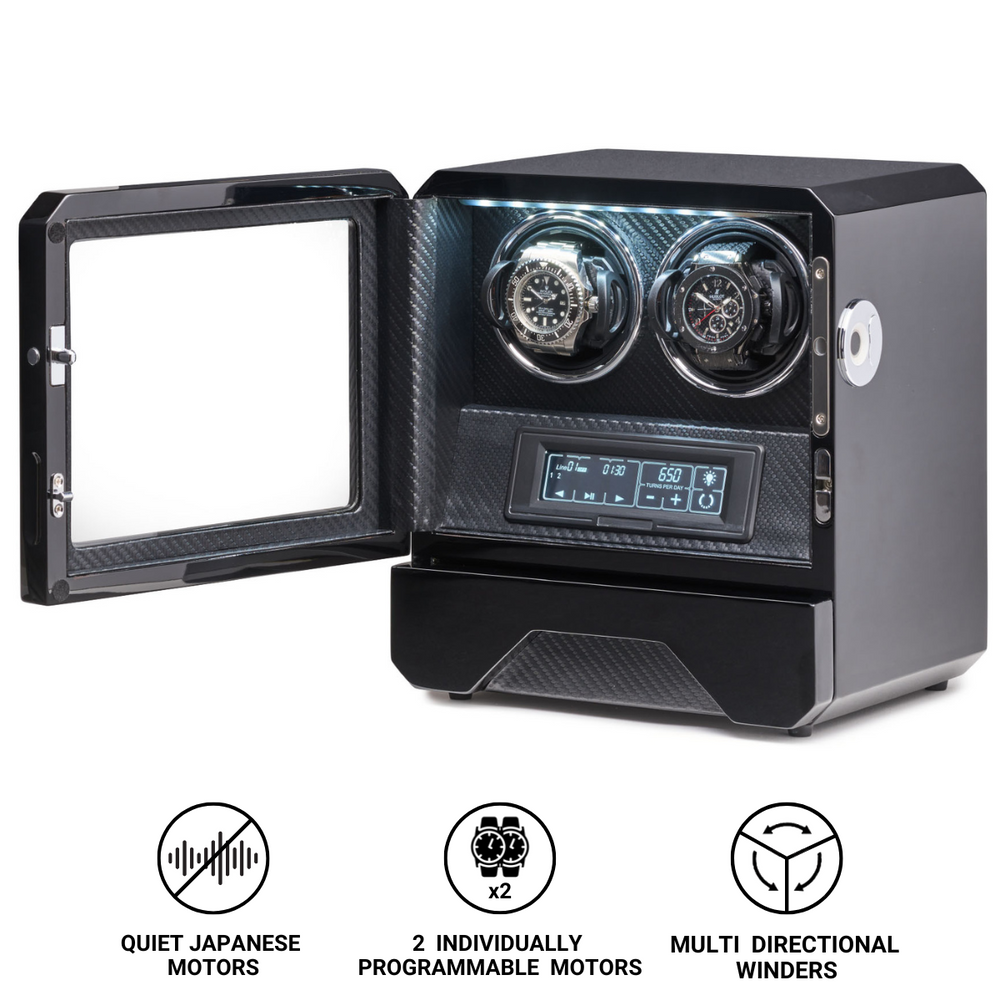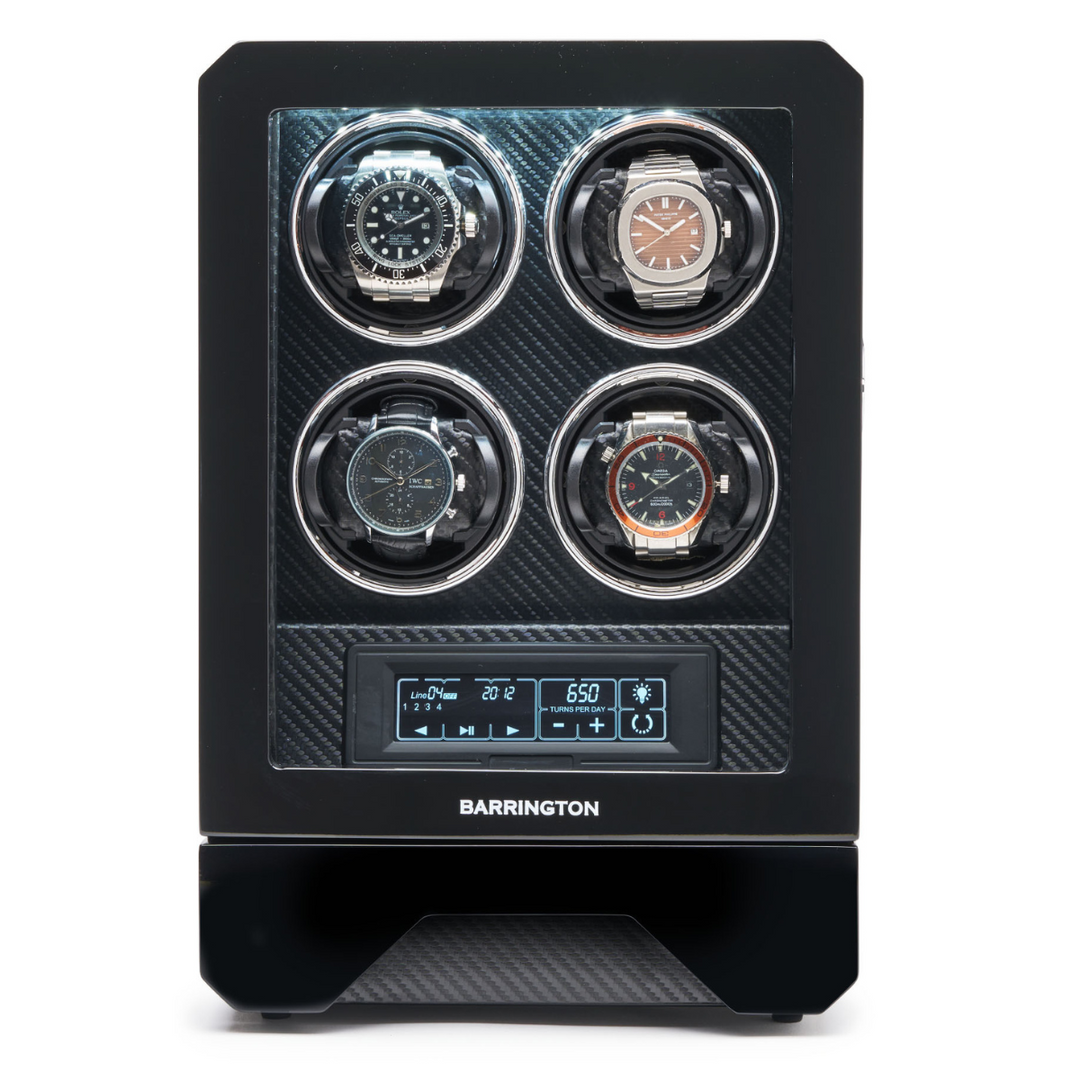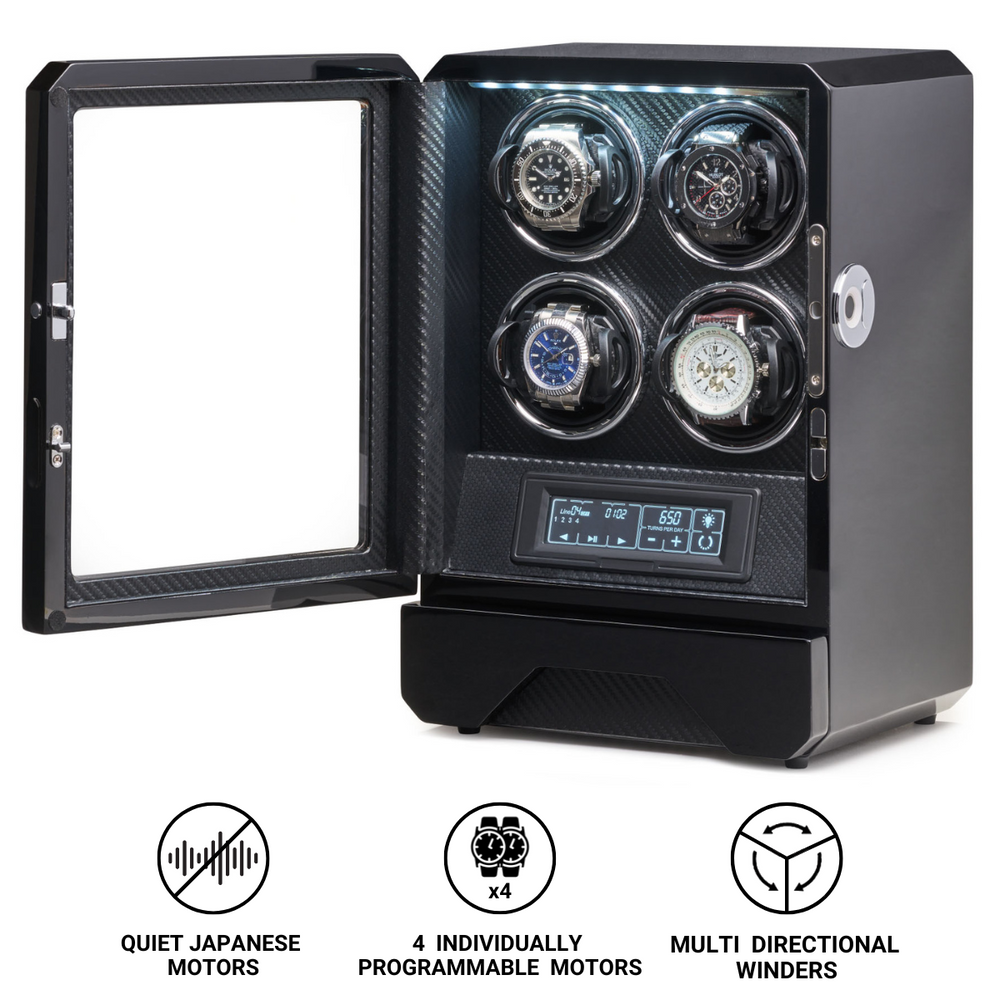A. Lange & Söhne: History of the watch brand
Key Points:
Alain Silberstein, a French architect turned watchmaker, revolutionised horology with bold colours and geometric designs.
His brand, founded in 1987, produced iconic models like the Krono Bauhaus before closing in 2012.
Silberstein’s collaborations with MB&F and Louis Erard revived his legacy and cemented his cult status among collectors.
Today his watches are highly sought after, valued as both mechanical timepieces and wearable works of art.
In the world of fine watchmaking, tradition often reigns supreme. Swiss and German manufactures are celebrated for their heritage, technical mastery, and devotion to centuries-old craftsmanship. Yet, every so often, a visionary emerges who dares to challenge convention and rewrite the rules of design. One such figure is Alain Silberstein, a trained architect who brought a bold new perspective to horology in the late 1980s.
Rather than following the established codes of understated elegance or mechanical conservatism, Silberstein turned the wristwatch into a canvas for artistic expression. His creations, instantly recognisable through their bright colours, playful geometric forms, and Bauhaus-inspired lines, blurred the boundary between functional timekeeping and wearable art. For collectors and enthusiasts, Alain Silberstein stands as a rare example of a brand that successfully fused design innovation with traditional Swiss mechanics, leaving a legacy that is as distinctive as it is influential.
The Founder: Alain Silberstein
Alain Silberstein was born in Besançon, the historic centre of French watchmaking, in 1950. Growing up in a city where horology had long been part of the cultural fabric, he was naturally exposed to fine craftsmanship, yet his early ambitions took him in a different direction. Silberstein studied interior architecture and design, graduating as an architect in the 1970s. This education honed his eye for structure, proportion and the relationship between form and function. Unlike many traditional watchmakers who approached horology through apprenticeship and technical mastery, Silberstein arrived with a designer’s mindset, seeing watches as both mechanical instruments and aesthetic statements.
For over a decade he worked as an interior designer, developing a deep appreciation for modernist principles. His influences ranged from the strict functionalism of Bauhaus to the playfulness of postmodern design. Movements such as De Stijl and the works of artists like Piet Mondrian inspired his fascination with primary colours and geometric reduction. These elements would later resurface on the wrist in the form of vivid red, yellow and blue hands shaped like triangles, circles and squares. To Silberstein, a watch dial was never simply about legibility but also about creating a visual dialogue between colour, shape and movement.
The transition from architecture to watchmaking was fuelled by both circumstance and passion. In the 1980s, the Swiss and French watch industries were still recovering from the Quartz Crisis, a period when many historic maisons struggled to redefine their identities. For Silberstein, this climate of uncertainty created opportunity. He believed mechanical watches could survive not by copying the past but by embracing creativity and individuality. His vision was that a timepiece could be more than a tool for measuring hours; it could be an object that provoked an emotional response, a wearable piece of contemporary art.
This conviction eventually led him to establish his own brand in 1987. Drawing on his architectural training, he applied the same principles of line, volume and proportion to his watch cases, while treating the dial as a miniature canvas. The result was a radically different aesthetic that immediately stood apart from the conservative designs of Switzerland and Germany. Alain Silberstein was not merely a watchmaker but a designer who brought art and playfulness to an industry that often considered such qualities secondary to tradition.
The Birth of the Brand (1987)
In 1987 Alain Silberstein established his own watchmaking workshop in Besançon, the French city where he was born. Unlike the grandes maisons of Switzerland or Germany, his atelier was small and independent, yet its purpose was ambitious. Silberstein sought to introduce a completely new perspective into the world of horology, blending Swiss mechanics with an unmistakably artistic design language.
The very first collection revealed just how daring his vision was. At a time when most luxury watches favoured classical dials, muted tones and discreet casework, Silberstein delivered something radically different. His designs featured:
-
Primary colours – vivid red, blue and yellow hands that instantly caught the eye.
-
Geometric forms – triangles, circles and rectangles replacing traditional hand shapes.
-
Playful case designs – cylindrical or angular forms that echoed architectural principles.
-
Unconventional details – crowns, pushers and even straps reimagined as design statements.
-
A sense of joy – watches that expressed personality rather than conformity.
This bold departure from convention divided opinion but also generated immediate attention. Collectors who longed for originality embraced Silberstein’s work as refreshing and daring, while critics questioned whether such whimsical designs belonged in fine watchmaking. Either way, his creations could not be ignored. Silberstein had successfully positioned his brand as the outsider who brought art, humour and individuality to the wrist.
The Design Philosophy
From the very beginning, Alain Silberstein treated the wristwatch as a medium for artistic expression rather than simply a tool for telling the time. His design language was instantly recognisable and deliberately unconventional, built on a playful yet highly disciplined visual code.
At the core of his philosophy were two elements: geometry and colour. Every watch combined simple shapes with bold tones to create a composition that was both functional and artistic:
-
Geometry – circles, triangles and squares were not just decorative but central to his design. Hour hands often became triangles, minute hands slender rectangles, and seconds hands perfect circles.
-
Colour – red, blue and yellow, the three primary colours, served as his palette. Used sparingly yet decisively, they added clarity and vibrancy to the dial.
-
Contrast – monochrome cases and backgrounds provided balance, ensuring the bright accents stood out without overwhelming the design.
Silberstein drew inspiration from the Bauhaus movement of the early 20th century, where the principle of “form follows function” merged utility with beauty. Yet he also embraced the spirit of postmodernism, rejecting rigid rules in favour of humour, playfulness and irony. The result was a body of work that could be taken seriously as horology but also smiled back at the wearer.
For Silberstein, a watch was “art you can wear”. It was a daily object that should evoke emotion, spark curiosity and express individuality. In contrast to the austere elegance of traditional Swiss timepieces, his creations invited collectors to see watches as companions of joy, conversation pieces that transformed timekeeping into a visual and emotional experience.
Comments from Barrington Watch Winders: Silberstein’s design philosophy shows that watches are not just tools but true expressions of personality. At Barrington Watch Winders we believe the same about watch ownership - presentation and care are just as important as precision.

Source: monochrome-watches.com
Milestones and Iconic Collections
The story of Alain Silberstein is best understood through its milestones, each reflecting the evolution of a brand that consistently prioritised creativity over conformity. From the daring launch in the late 1980s to its closure in 2012, Silberstein’s journey encapsulates both the promise and the fragility of independent watchmaking.
|
Period |
Key Milestones |
Iconic Creations |
Industry Impact |
|
1987–1990 |
Launch of the brand in Besançon. Silberstein immediately challenged the conservative codes of Swiss and German horology. |
Krono Bauhaus – a chronograph that epitomised his philosophy of colour and geometry. |
Marked one of the earliest successful attempts to merge art and watchmaking in the modern era. |
|
1990s |
Expansion into Europe, Japan and the United States. International press coverage established Silberstein as the “artist of the wrist”. |
Bolido, Marine and the Arkitek lines, each pushing the boundaries of case design and dial architecture. |
Gave credibility to design-driven independent brands, proving there was a global audience for unconventional luxury. |
|
2000s |
Independent makers faced growing pressure from conglomerates. Silberstein struggled with distribution and rising production costs. |
Limited series and boutique editions maintained his artistic identity, though in smaller numbers. |
Demonstrated the vulnerability of small independents during an era of consolidation in the watch industry. |
|
2010s |
Closure of the company in 2012 after 25 years. Silberstein’s watches began to be recognised as highly collectible works of art. |
Final independent pieces, including late variations of the Krono Bauhaus, became highly sought after on the secondary market. |
Reinforced Silberstein’s reputation as a cult figure, paving the way for later collaborations with other avant-garde brands. |
These milestones reveal more than just dates and models. They tell the story of a brand that rose quickly on the strength of originality, influenced global watch design in the 1990s, and ultimately fell victim to the financial realities of the 2000s. Yet, rather than fading into obscurity, Alain Silberstein’s legacy only grew stronger after the company’s closure. His watches are now celebrated as icons of independent design, treasured by collectors who value creativity as highly as mechanical precision.
Collaborations and Revival
Although the original Alain Silberstein company closed in 2012, the designer’s vision did not disappear. Instead, Silberstein found a new platform through collaborations with other independent watchmakers and established maisons. These partnerships allowed him to continue expressing his design language while reaching audiences who might never have encountered his original creations.
The most notable collaborations include:
-
MB&F (2011 and 2016) – Silberstein worked with Maximilian Büsser on the HM2.2 Black Box and later the LM1 Silberstein. These pieces combined MB&F’s mechanical innovation with Silberstein’s playful geometry and colours. The LM1 Silberstein in particular is considered one of the most memorable Legacy Machine variations, with its vibrant red, blue and yellow hands dancing over MB&F’s floating balance wheel.
-
Louis Erard (2019 onwards) – The partnership with Louis Erard marked Silberstein’s true return to centre stage. The Excellence Regulator, Excellence Le Régulateur II and subsequent limited series brought his design codes to a wider audience at a more accessible price point. These watches retained the same joyful Bauhaus-inspired elements while offering modern reliability.
-
Other collaborations – Silberstein has also contributed to smaller projects and one-off editions, often produced in very limited numbers, which have quickly become collector favourites.
These joint ventures revitalised interest in his work and reinforced his cult status among collectors. By working with partners who respected both the technical and artistic sides of watchmaking, Silberstein preserved the essence of his philosophy without the burden of running a full-scale manufacture.
Limited editions from these collaborations have become highly sought after, with waiting lists and strong performance on the secondary market. More importantly, they ensured that Alain Silberstein’s name remained alive within the industry. His role shifted from that of an independent brand owner to that of a creative collaborator, but the result was the same: distinctive, joyful timepieces that defy convention and celebrate individuality.
Recognition and Collectors’ Market
Today, Alain Silberstein’s watches occupy a unique position in the collectors’ market. Once regarded as provocative novelties, they are now recognised as pioneering works that anticipated the growing appetite for independent and design-driven horology. The closure of the brand in 2012 only increased demand, turning many of his creations into highly desirable collector’s items.
On the secondary market, Silberstein watches consistently perform well. Limited editions and early models such as the Krono Bauhaus or Marine attract significant attention at international auctions, often achieving prices far above their original retail value. The rarity of these pieces, combined with their instantly recognisable aesthetic, has cemented their reputation as icons of late twentieth-century watch design.
Collectors particularly value:
-
Limited production – many of Silberstein’s creations were made in very small numbers, enhancing their exclusivity.
-
Distinctive design – the geometric hands and bold colours ensure that even decades later the watches remain unmistakable.
-
Historical importance – as one of the few designers who successfully bridged modern art and horology, Silberstein’s work carries cultural weight as well as mechanical interest.
In the United Kingdom, Silberstein enjoys a loyal following among collectors who appreciate originality and individuality. British connoisseurs, often with a keen interest in design history, find his work especially compelling because it resonates with traditions of modernist architecture and post-war art movements that also influenced British design. As a result, Silberstein watches are not only valued as timepieces but also as conversation pieces, bridging the gap between fine watchmaking and contemporary art.
Comments from Barrington Watch Winders: As collectors increasingly value Silberstein’s limited editions, proper storage and maintenance become essential. Our watch winders are designed to keep such rare automatic pieces safe, accurate and beautifully displayed.
The Ideal Companion for Automatic Watches
For collectors, owning an Alain Silberstein or any fine automatic timepiece is not only about appreciating its artistry but also about preserving it for the years ahead. Automatic watches require regular motion to keep their mechanisms lubricated and accurate, even when they are not worn. At Barrington Watch Winders, we have designed precision-engineered watch winders that combine functionality with elegant presentation, offering the ideal way to protect and display your collection.
Barrington Single Winder - Glacier White
(The Barrington Single Winder in Glacier White is a flagship model that combines refined design with advanced functionality, making it an ideal choice for any automatic watch owner. Compact yet stylish, it features an ultra-quiet Japanese motor, customisable rotation settings and multiple Turns Per Day options that ensure compatibility with timepieces of every weight and movement. Its sleek form fits effortlessly into any interior, while flexible power options allow operation via AC mains or AA batteries. The signature Barrington "Jump" feature lets collectors connect and power multiple winders together, creating a seamless display that is as practical as it is elegant. For those who wish to keep their watch both perfectly wound and beautifully presented, the Glacier White edition represents the pinnacle of accessible luxury).
Barrington Special Edition Single Winder - Santos Rosewood
(The Barrington Special Edition Single Winder in Santos Rosewood combines refined craftsmanship with advanced engineering, offering both elegance and precision for automatic watch enthusiasts. Its rich Santos Rosewood finish provides a timeless aesthetic, while the ultra-quiet Japanese motor and fully customisable rotation and TPD settings ensure reliable care for any timepiece. Compact in size yet highly versatile, it can be powered by either AC mains or AA batteries and features the Barrington "Jump" system that allows multiple winders to be seamlessly connected for a cohesive display. Designed to preserve accuracy and enhance presentation, this special edition model is the perfect balance of performance and sophistication).

(The Barrington 4 Watch Winder is a luxury solution designed for serious collectors who want to combine secure storage with advanced watch care. Housed in a sleek closed display case with a carbon fibre-effect interior, it features four individually programmable rotors, allowing each watch to receive customised winding settings. A fingerprint sensor ensures secure access, while a digital touch screen and remote control provide effortless management of rotation direction and Turns Per Day. The ultra-quiet Japanese motors make it suitable for any environment, while built-in LED lighting and a dedicated storage drawer add both practicality and elegance. Balancing innovation, style and reliability, this winder offers the perfect home for multiple automatic watches).
Whether you own a colourful Silberstein chronograph or a classic Swiss icon, a quality watch winder ensures that your timepiece remains ready to wear at any moment. Barrington watch winders provide gentle, reliable rotation while serving as a stylish display for your watches. For every enthusiast who values both performance and presentation, they are an essential companion to a treasured collection.Legacy and Influence
Alain Silberstein’s contribution to watchmaking extends far beyond the pieces that bear his name. His work demonstrated that horology could be more than tradition and precision; it could also be an artistic medium capable of provoking emotion and sparking debate. By introducing geometry, colour and playfulness into the restrained world of high-end watches, Silberstein broadened the very definition of what a mechanical timepiece could represent.
His influence can be seen in the wave of independent watchmakers who followed. Brands and designers increasingly felt free to experiment with unconventional shapes, bold palettes and whimsical details, confident that there was an audience willing to embrace creativity over conformity. The collaborations he later undertook with MB&F and Louis Erard served as proof that the industry valued his vision, not only as a relic of the past but as a living source of inspiration for contemporary horology.
For many collectors and enthusiasts, Silberstein stands as a symbol of freedom within the watch industry. At a time when corporate consolidation and safe design dominated the landscape, he chose to pursue humour, individuality and artistic experimentation. That independence, both in spirit and in practice, made his brand a touchstone for those who believe that watches can express personality as much as they display time. His legacy is not merely a catalogue of distinctive models but a reminder that watchmaking, at its best, is as much about imagination as it is about mechanics.
Conclusion
Alain Silberstein’s story is one of creativity, courage and individuality. He transformed the watch from a purely functional object into a canvas for artistic expression, proving that geometry, colour and imagination could co-exist with mechanical precision. His brand may no longer produce watches under its own name, but the legacy lives on through the collectors who treasure his creations and the independent watchmakers he continues to inspire. Silberstein showed the industry that fine horology does not have to be bound by tradition alone. It can also be playful, human and deeply personal.
For today’s collectors, particularly those who see watches as both instruments and artworks, Silberstein’s creations remain highly desirable. Preserving and showcasing such unique timepieces requires care and respect. At Barrington Watch Winders, we understand the importance of keeping automatic watches – whether classic Swiss icons or avant-garde independents – perfectly wound and elegantly displayed. Just as Alain Silberstein elevated the watch into an object of design, we aim to provide winders that protect, maintain and showcase these remarkable pieces for years to come.
FAQ: Alain Silberstein – History of the Watch Brand
Who was Alain Silberstein and why is he important in watchmaking?
Alain Silberstein was a French designer and trained architect who entered the world of horology in the 1980s. Unlike traditional watchmakers, he approached the wristwatch as a piece of wearable art, using bold colours and geometric shapes. His work challenged conservative norms and influenced many independent brands that followed.
What makes Alain Silberstein watches unique?
His watches are instantly recognisable thanks to their use of primary colours and playful geometric forms on the hands and dials. Rather than striving only for classical elegance, Silberstein embraced joy and creativity, turning the wristwatch into a design statement. This balance of artistic vision with Swiss mechanics makes his pieces stand apart in the collectors’ market.
Why did the Alain Silberstein brand close in 2012?
The closure was largely due to the financial pressures faced by independent watchmakers in the early 2000s and 2010s. Rising production costs and increasing competition from larger groups made it difficult to sustain operations. Despite this, Silberstein’s reputation only grew after the closure, with his creations becoming cult favourites.
How valuable are Alain Silberstein watches today?
On the secondary market, his models, especially limited editions, command strong interest and often achieve prices far above their original retail value. Collectors appreciate both their rarity and their artistic significance. The market has redefined these watches from novelties to icons of late twentieth century design.
Why are Alain Silberstein watches popular among British collectors?
British collectors have long valued originality and strong design heritage, and Silberstein’s creations resonate with this tradition. His Bauhaus and postmodern influences align with movements that also shaped British design in the twentieth century. For many in the UK, owning a Silberstein watch means celebrating both horological craft and artistic freedom.














